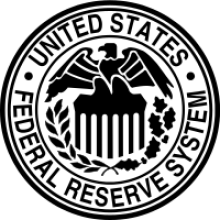
Fast, affordable Internet access for all.

The Federal Reserve is responsible for setting interest rates and executing monetary policy in the United States, but many people don’t realize that the agency also has a hand in community development. This summer, the Federal Reserve Bank of Dallas released a report, Closing the Digital Divide: A Framework for Meeting CRA Obligations, which includes information for banks about funding digital inclusion programs and community networks.
The report, published in July, states:
“Access to broadband has become essential to make progress in all areas of community development—education and workforce development, health, housing, small-business development and access to financial services.”
Closing the Digital Divide is important not only because it provides substantial information for banks, but also because it indicates federal support exists for community-based infrastructure improvements. The report discusses improving Internet access for low and moderate-income individuals and neighborhoods.
Using The Community Reinvestment Act To Improve Infrastructure
From the 1930 until the late 1970s, many banks denied lending to individuals and organizations based on their location. The practice is called “redlining” after the red ink that outlined low-income neighborhoods on a map, and was made illegal when Congress passed the Community Reinvestment Act (CRA) in 1977. Under the CRA, banks must to use the same evaluation criteria for all loan applicants regardless of the neighborhood they live in, which expands lending to include low and moderate-income (LMI) individuals. The Federal Reserve assesses banks’ performance under CRA guidelines, which bring about $100 million in capital to low and moderate income areas per year through various projects. Improving Internet access is an increasingly large portion of these initiatives.
In The Weeds
As part of the act, banks must “identify and invest in low and moderate-income communities.” Eligible activities include affordable housing, services geared toward LMI individuals, financing for certain small businesses and farms, and other revitalization efforts. Bringing broadband infrastructure to underserved communities qualifies as community development. The Fed’s report helps banks understand the importance of Internet access to LMI communities, identifies best practices for digital inclusion, and assists banks in meeting CRA reporting requirements. Banks can use this report to make the case for funding infrastructure improvements to meet CRA guidelines, expand access for LMI families, and help reduce digital disparities.
The Three Legged Stool Of Digital Inclusion
Generally, digital inclusion efforts include three components: providing devices to users, training users in digital literacy, and improving actual access to the Internet by improving speeds and/or reducing cost of access. The report acknowledges and important characteristic of the “three legged stool” - the legs are not equally important. Report author Jordana Barton, who is a senior advisor for Community Development at the Federal Reserve Bank of Dallas writes, “Owning a computer and knowing how to use it effectively are not relevant unless there is a sufficient connection to the Internet.”
Through this report, the Federal Reserve brings attention to the many benefits of investing in broadband infrastructure and improving LMI Internet access. As technology becomes increasingly present in our daily lives, the need to address disparities also becomes more pressing. We are encouraged to see that local banks are working in their communities to improve Internet access, and that the Federal Reserve’s community development office is beginning to recognize how local entities can best address the digital divide.
